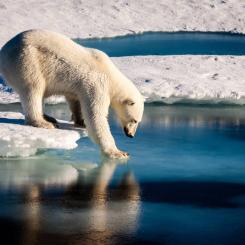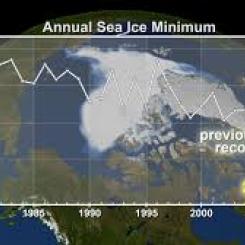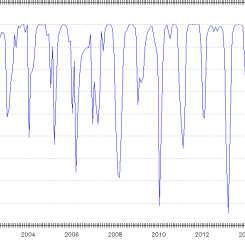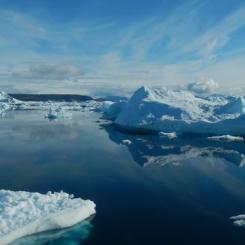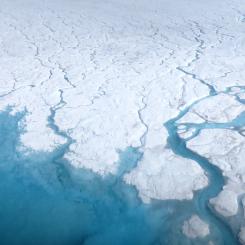Snow and Ice Extent
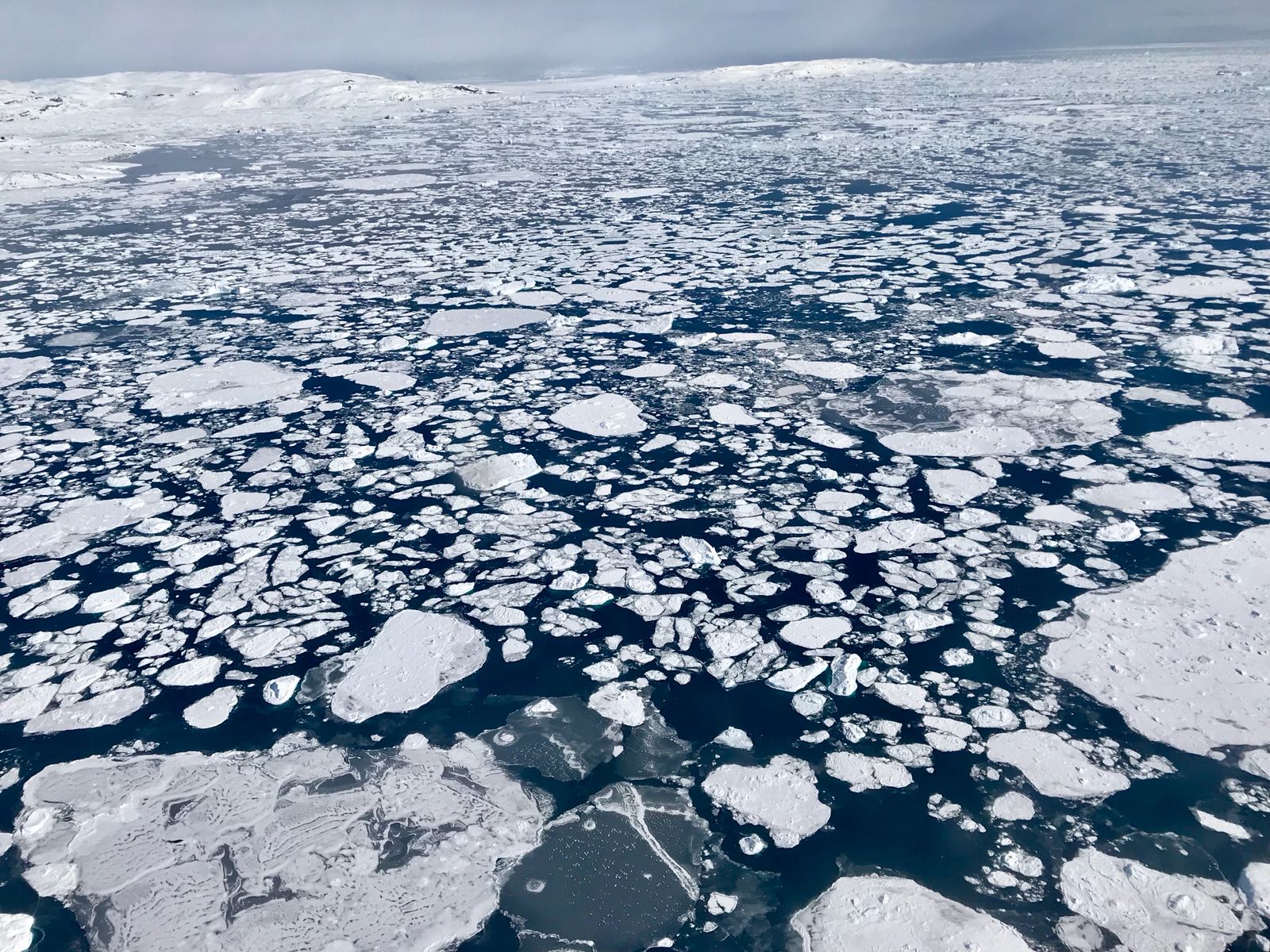
Ice is found all around our planet, from the highest peak in Africa to the icy North and South Poles. Snow, ice sheets, glaciers, sea ice and permafrost, known as the cryosphere, act as Earth’s thermostat and freezer, regulating temperatures by reflecting heat from the Sun and storing almost two-thirds of our fresh water.

Ice, which covers 10 percent of Earth's surface, is disappearing rapidly. While the Arctic sea ice extent is declining, air temperatures are rising. Vegetation is changing, with tundra being replaced by shrubs. Permafrost is warming and thawing over parts of the Arctic. Some of these changes, such as the replacement of white reflective sea ice with dark open water, set in motion feedbacks that contribute to even further warming. As the Arctic warms, some animal species are finding the region more hospitable, while others are seeing declines in their habitat. The recent changes in the Arctic region have important impacts for regions outside of the Arctic and for the global climate.
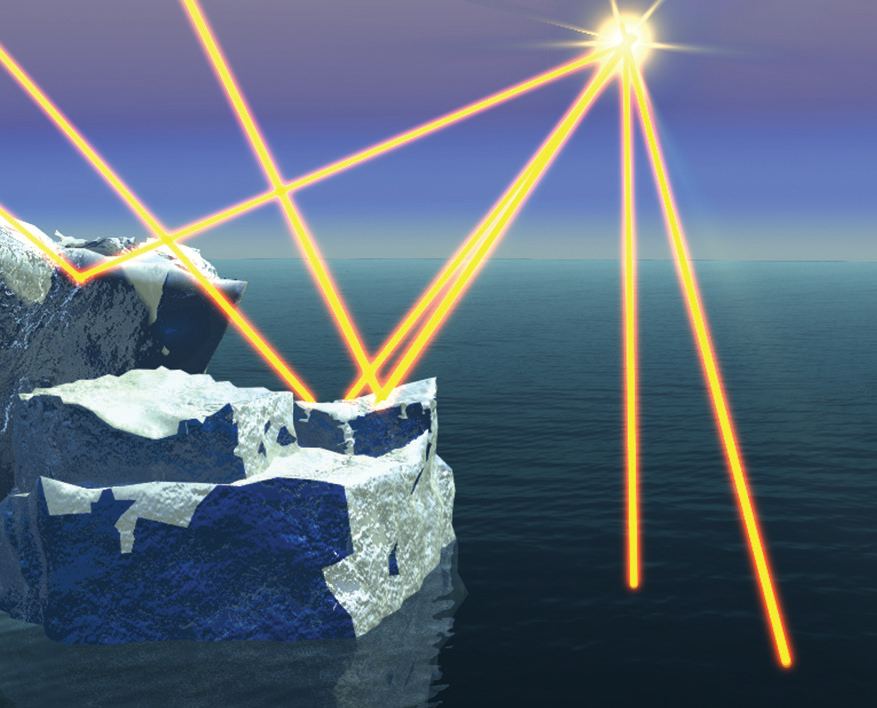 Light-colored surfaces that reflect more sunlight have a high albedo, and dark surfaces that absorb more sunlight have a lower albedo. Ice reflects a lot of sunlight back into space; it has a high albedo. When ice melts, the ice is replaced with darker water and land surfaces with lower albedos. The darker surfaces that replace the ice warm up more as they absorb more of the Sun’s energy than the ice surface that they replace. This can lead to more ice melt and expose a larger surface area to sunlight.
Light-colored surfaces that reflect more sunlight have a high albedo, and dark surfaces that absorb more sunlight have a lower albedo. Ice reflects a lot of sunlight back into space; it has a high albedo. When ice melts, the ice is replaced with darker water and land surfaces with lower albedos. The darker surfaces that replace the ice warm up more as they absorb more of the Sun’s energy than the ice surface that they replace. This can lead to more ice melt and expose a larger surface area to sunlight.
How is the Cryosphere affected?

Glacial retreat
-
Glaciers are retreating almost everywhere around the world — including in the Alps, Himalayas, Andes, Rockies, Alaska and Africa.
Shrinking ice sheets 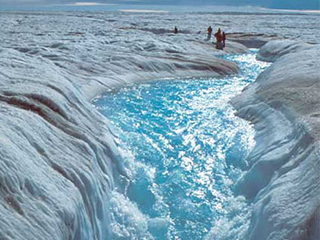
-
The Greenland and Antarctic ice sheets have decreased in mass. Data from NASA's Gravity Recovery and Climate Experiment show Greenland lost 3.59 trillion metric tons (7,915 trillion pounds) of ice between May 2003 and June 2016. Over the same period, Antarctic lost 1.63 trillion metric tons (3,602 trillion pounds) of ice.
Declining Arctic sea ice 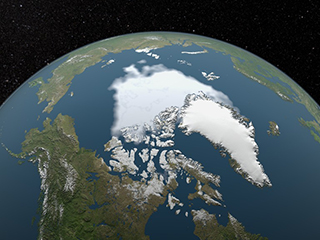
- Both the extent and thickness of Arctic sea ice has declined rapidly over the last several decades. According to the National Snow and Ice Data Center, average September sea ice extent has been reduced by 32 percent over the period of 1979-2017.
Where does this melting occur?
Ice is found wherever cold temperatures (below the freezing temperature of water) are found consistently for several months each year or year-round. These consistent cold temperatures are found close the North and South Poles and at high elevations (mountains) throughout the world.
Ice forms differently over the ocean compared to land. Over oceans and seas, ice forms when cold temperatures freeze the water at the surface. Sea ice is found in the Arctic Ocean and the seas surrounding Antarctica. Land ice forms when snow piles up year after year, then gets compressed and hardens. Ice sheets and glaciers on Greenland and Antarctica hold much of our planet's land ice. Land ice is also found in glaciers at high elevations throughout the world.
Despite the differences, both land and sea ice grow less and melt more with warmer temperatures. Scientists have found evidence of increased melting of both land and sea ice in recent years throughout the world, in response to warming temperatures.
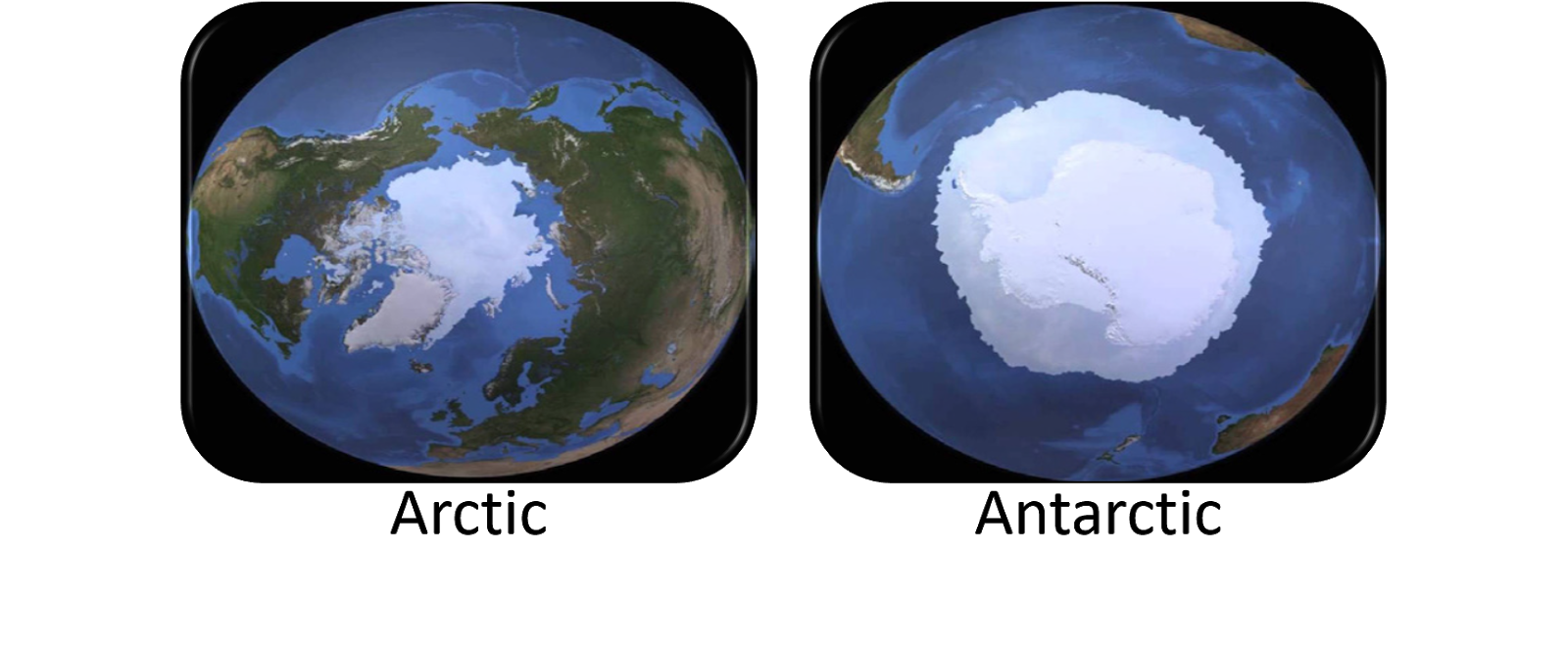
When do they occur? What are the impacts of increased melt?
Land Ice
The melt of land ice occurs during the times of year when temperatures are warmer, such as in summer. When land ice melts, it adds stored water into rivers, lakes, reservoirs, and the ocean. The growth of land ice occurs during times of year when temperatures are colder and snow falls, such as in winter. The total effect of the growth of ice is to take water out of the ocean.
If the rate of melting increases more than the rate of growth, the mass of land ice decreases and the amount of water in the ocean increases. The increased melting of large areas of land ice raises the level of the ocean. Scientists have observed increased melting in land ice on both Greenland and Antarctica in recent years. Greenland has been losing about 280 gigatons of ice per year on average, and Antarctica has lost almost 120 gigatons a year with evidence that both melt rates are increasing. A single gigaton of water would fill about 400,000 Olympic-sized swimming pools; each gigaton represents a billion tons of water.
Glaciers are another form of land ice and act like frozen rivers. They flow like rivers, only much slower. Many of them flow toward the ocean, then break off in chunks (icebergs)--sometimes huge chunks. Whether the end of the glacier advances or retreats and the glacier gains or loses ice depends in part by the rate of melting. Lately, glaciers have been losing ice and retreating in more places throughout the world. In places such as Glacier National Park in Montana's Rocky Mountains the glaciers are melting and disappearing. The air is getting warmer, and less snow is falling during winter to renew the melted parts of the glaciers, and more melt has been occurring at the end of glacier during the summer.
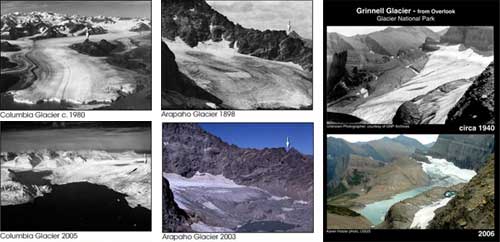
Permafrost
Permafrost is any ground that remains completely frozen—32°F (0°C) or colder—for at least two years straight. These permanently frozen grounds are most common in regions with high mountains and in Earth’s higher latitudes—near the North and South Poles. It covers large regions of the Earth; almost a quarter of the land area in the Northern Hemisphere has permafrost underneath. Although the ground is frozen, permafrost regions are not always covered in snow.
As Earth’s climate warms, the permafrost is thawing. That means the ice inside the permafrost melts, leaving behind water and soil.
Thawing permafrost can have dramatic impacts on our planet and the things living on it. For example:
- Many northern villages are built on permafrost. When permafrost is frozen, it’s harder than concrete. However, thawing permafrost can destroy houses, roads and other infrastructure.
- When permafrost is frozen, plant material in the soil—called organic carbon—can’t decompose, or rot away. As permafrost thaws, microbes begin decomposing this material. This process releases greenhouse gases like carbon dioxide and methane to the atmosphere.
- When permafrost thaws, so do ancient bacteria and viruses in the ice and soil. These newly-unfrozen microbes could make humans and animals very sick. Scientists have discovered microbes more than 400,000 years old in thawed permafrost.
Sea Ice
Unlike land ice melting, melting sea ice does not increase sea levels. Sea ice is like floating ice cubes in a cup of water. When they melt they don’t change the level of the water. Sea ice forms when sea water freezes and is found in the Arctic Ocean, the Southern Ocean around Antarctica, and other cold ocean regions.
NASA's Earth satellites show us that every summer some Arctic ice melts and shrinks, covering the smallest area by September. Then, when winter comes, the ice grows again. Since 1979, the September ice has been getting smaller and smaller and thinner and thinner.
Summertime sea ice in the Arctic Ocean now routinely covers about 40 percent less area than it did in the late 1970s, when continuous satellite observations began. This kind of significant change could increase the rate of warming already in progress since more dark (low albedo) open ocean, and less white (high albedo), now exists in summer. This increased warming in regions with sea ice affect global weather patterns.
The sea ice is also an important part of how ocean currents move heat from the equator to the poles and move the cold water from the poles back to the equator. All life in the ocean depends on this energy circulation. All life on land also depends on life in the oceans. Sea ice is an important measure of our planet's health.
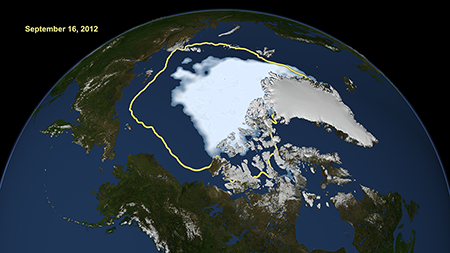
Why Does NASA Study Ice?
The amount of ice on our planet affects how much energy is absorbed by the Earth's system and also impacts global sea level. These are just some of the reasons why scientists study ice.
NASA’s Ice, Cloud, and Land Elevation Satellite-2 (ICESat-2) is scheduled for launch in 2018. Its main instrument will be a laser altimeter, which can measure the height of the Earth’s surface, particularly its icy parts. The instrument sends out small pulses of visible laser light and measures how long they take to reflect off the surface and back to the satellite.
Repeated measurements over several years can help scientists track the movement and melting of the ice. Tiny changes in the height of ice sitting on top of Greenland or Antarctica can mean large amounts of melt water pouring into the ocean and raising sea level.

